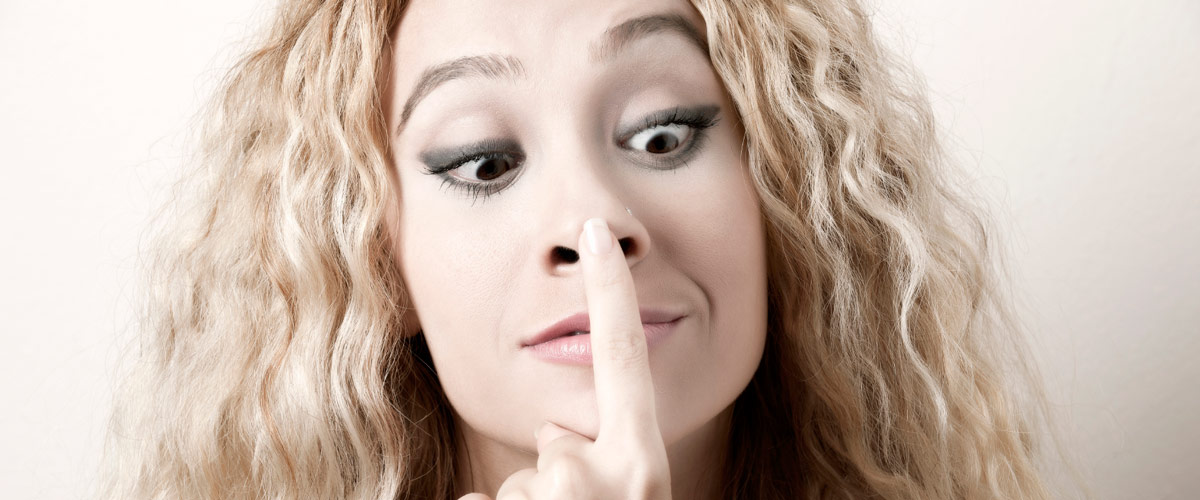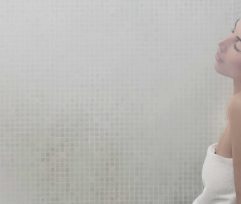The nose is one of the most prominent features on our faces. It is often the first drawn in childish doodles after the placing of eyes and in real life it can be unsettling if one feels their nose stands out for one reason or another.
Rhinoplasty (commonly known as a ‘nose job’) is the restructuring of some or all of the proportions of the nose, so that it fits in a balanced way according to the specifications of the patient.
But before going through any medical procedure its important to know what kind of recovery process is involved so you can make an informed decision about how much pain you may experience and how much off-time you are going to need.
Rhinoplasty recovery is different for each patient. Right after, one will usually have splints inside their nose, as well as bandages and possibly another splint on the outside to protect the shape and structure of the nose post operation. And yes that means that you may not be able to breath out of your nose for at least seven days (most doctors remove the internal splints seven days after surgery). So be prepared to breath out of your mouth only for a few days.
Rhinoplasty: Day One
As mentioned above, on the day of your operation, you will most probably have splints in your nose, as well as bandages on the outside of your nose holding the results in place. You will also most likely have a bandage or gauze at the base of your nose to catch any mucus or blood draining from your nose. This bleeding is very normal and can last for the entire first week to some degree. If you are bleeding more one day than the previous contact your doctor and let them know. But if it seems to be decreasing by day, then you should consider that a normal part of the healing process.
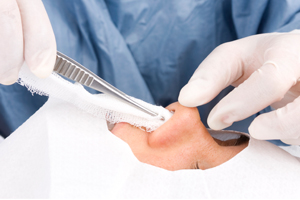 If you had a general anesthetic, upon waking you may feel confused and a little nauseous. Once you get your bearings, and as soon as your doctor visits you for the first time after your surgery, they will explain why you are having those symptoms and will most probably prescribe you painkillers, anti-nausea tablets (if you need them) and possibly an antibiotic.
If you had a general anesthetic, upon waking you may feel confused and a little nauseous. Once you get your bearings, and as soon as your doctor visits you for the first time after your surgery, they will explain why you are having those symptoms and will most probably prescribe you painkillers, anti-nausea tablets (if you need them) and possibly an antibiotic.
If you are discharged that day make sure you have someone to drive you home. You may not be permitted to drive for up to a week.
You will feel swollen, look swollen and will be in some degree of pain from the surgery. The amount of swelling varies from patient to patient. But expect to have bruising under or around your eyes, in your cheeks and of course in the nose too.
Your number one priority is to rest after surgery. When you do rest, it should be such that your head is elevated. If you have visitors let them know that you are supposed to be resting. Even talking too much could cause you extra pain in your nose. So perhaps let people know in advance that they will not be able to engage in lengthy conversations with you.
You will be not be permitted to exercise or take part in any aerobic activity for at least a month after surgery.
Rhinoplasty: Day Two
Even though you are on your way toward recovery, you may find the bruising increases on the second day. This is very normal. The bruising will continue to shift from maybe one nostril to the other or will be more or less in that first week in different areas of your face. Don’t be alarmed by this. And bring up any unusual swelling or bruising to your doctor.
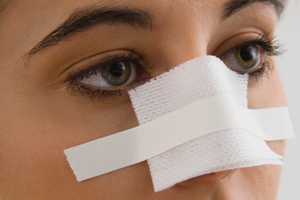 You may have a stomachache, particularly if you haven’t had a bowel movement since surgery. Ask your doctor if you should take a laxative to decrease the pressure on your nose from your first bowel movement.
You may have a stomachache, particularly if you haven’t had a bowel movement since surgery. Ask your doctor if you should take a laxative to decrease the pressure on your nose from your first bowel movement.
Overnight you may awake from the pain, to stay on top of this, to take your medication as directed. Your doctor will have anticipated your pain levels when prescribing your medication. It’s best to listen to their instructions and follow them very closely. You will probably have a combination of painkillers, cortisone, anti biotics and possibly anti anxiety medication as well as arnica cream for the bruising.
You will most likely be instructed not too shower and to only take baths from the neck down. This is too avoid any pressure, including from drops of water hitting your nose.
You may experience a slight sore throat, both from the general anesthetic and from breathing from your mouth only. This is normal, and your doctor can prescribe medication to help with the soreness.
Rhinoplasty: Day Three
You may feel a little more swelling around the eyes, nose and cheeks. You might still be bleeding a little from one or both nostrils. At this stage that is still very normal.
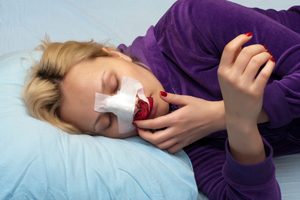 By the third day, the nausea will most probably have decreased if not gone away completely. But you will most probably have to eat only foods that require little or no chewing. Chewing can put pressure on your nose. So foods like pasta and ice cream that are soft and easy to swallow would be recommended.
By the third day, the nausea will most probably have decreased if not gone away completely. But you will most probably have to eat only foods that require little or no chewing. Chewing can put pressure on your nose. So foods like pasta and ice cream that are soft and easy to swallow would be recommended.
If you have a fever by day three you should definitely check with your doctor for the possibility of infection. If your doctor finds an infection, they will most likely prescribe an anti biotic.
Your lips may be getting chapped because you are breathing mostly if not solely from your mouth. It’s a good idea to have some chap stick with you to alleviate any soreness from chapped lips.
If you haven’t done so already, you may want to wash your hair on day three. Make sure you don’t let any water touch your face. You may want to have someone else wash your hair for you if possible. If not, you can still wash it yourself. Just be sure to keep your face up and elevated as much as possible and don’t put your face under running water.
Rhinoplasty: Day Four
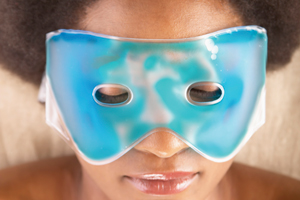 By the fourth day you may be able to breathe a small amount through your nose, but there is still a possibility that the nose will be fully blocked. The latter is normal and to be expected.
By the fourth day you may be able to breathe a small amount through your nose, but there is still a possibility that the nose will be fully blocked. The latter is normal and to be expected.
You may have been told to use an ice pack for swelling. Please ask your doctor when it is OK for you to do this and how long to leave the ice on your nose for. These instructions will vary for each patient and it most important to get specific advise during your healing process.
Rhinoplasty: Day Five
At this stage, you may still have bleeding from both or just one side of your nose. The drainage process will vary for each patient and can take up to ten days to stop.
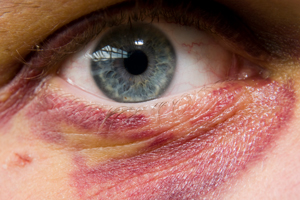 Your priority on the fifth day is still to rest and keep your head elevated. Even though you might be starting to feel better, make sure you are not talking too much or making any sudden movements of the face. These can all place extra pressure on your nose.
Your priority on the fifth day is still to rest and keep your head elevated. Even though you might be starting to feel better, make sure you are not talking too much or making any sudden movements of the face. These can all place extra pressure on your nose.
Remember you can’t carry heavy items or anything over three pounds for up to two weeks after surgery. So remember to ask for help if there is anything heavy around you that needs lifting.
You will still be bruised, at this stage. The bruising around your eyes and nose could be purple, green, yellow or a combination of all three colors. If the swelling worsens after day five, let your doctor know. At this stage, the swelling in your face should start to go down little by little every day.
Rhinoplasty: Day Six
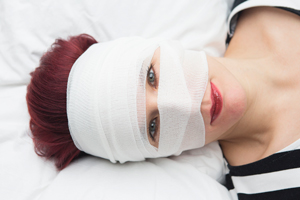 By the sixth day you will most probably notice a visible decrease in the amount of swelling in your eyes, nose and cheeks. The nose will be the last to lose the swelling. The majority of the swelling in your nose will disappear in the first two months, but the full result of your rhinoplasty may not be realized for up to a year after surgery.
By the sixth day you will most probably notice a visible decrease in the amount of swelling in your eyes, nose and cheeks. The nose will be the last to lose the swelling. The majority of the swelling in your nose will disappear in the first two months, but the full result of your rhinoplasty may not be realized for up to a year after surgery.
Remember during this first week, resting is still your priority. You might still feel a little groggy and like you have a cold or flu. This is very normal. Until you have the splints removed from your nose on day seven, you will find it very hard to breathe normally through your nose.
You might be feeling itchy as your nose starts to heel. Try and not scratch it as much as possible. The itching is normal and is a sign that your skin around the nose is healing.
Rhinoplasty: Day Seven
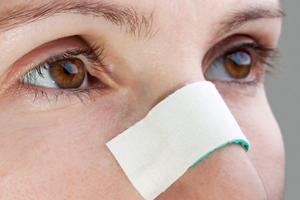 You will most likely be taking out the splints and external cast today. If there are internal stitches, they will most likely be those that dissolve on their own. Any external stitches on your tk name will most probably be removed today also. You may still be left with a bandage across your bridge and around the tip of your nose. This is to maintain the shape of your nose externally. Your doctor will let you know when it is safe to remove those bandages also. Usually those are taken off by the end of the second week.
You will most likely be taking out the splints and external cast today. If there are internal stitches, they will most likely be those that dissolve on their own. Any external stitches on your tk name will most probably be removed today also. You may still be left with a bandage across your bridge and around the tip of your nose. This is to maintain the shape of your nose externally. Your doctor will let you know when it is safe to remove those bandages also. Usually those are taken off by the end of the second week.
By this stage you can apply make up to your face to hide any remaining swelling. Remember to be very gentle with your face as sudden movements can hurt your nose and lengthen the healing process.
Rhinoplasty: after the first week
After the first week, you will start to feel better and less groggy. Remember you are still resting and healing, and it is most important to keep your head elevated when you’re sleeping. Your doctor will let you know when you can sleep on your side again.
You will still be experiencing some pain and you may still feel like your nose is blocked. That is a normal feeling and can last up to two weeks. Your doctor can let you know when and how to clean your nose with q-tips to alleviate some of the congestion.
Your nose will still be swollen and the swelling may not fully subside for up to a year. Once you start to get out and about, it’s most important to put 30+SPF on your nose to prevent skin discoloration from sun damage.

